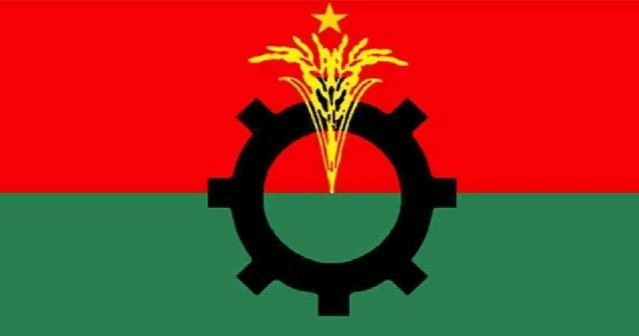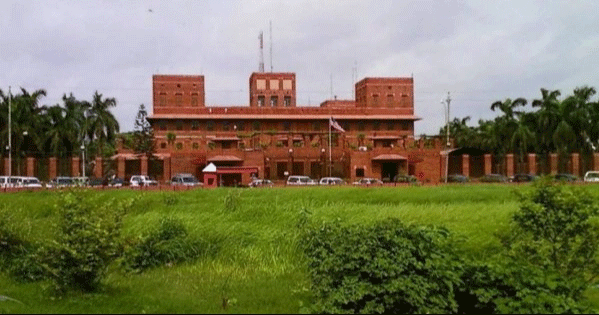Garments in risk of facing huge challenges
Staff Correspondent: At the beginning of the outgoing year, the situation took a turn for the worse in the midst of entrepreneurs’ worries about the export growth of the ready-made garment sector. Labor unrest began around the garment workers’ new wage structure, which at one point spiraled out of control. 4 workers died. This incident has affected this sector more than 85 percent of the export income. Besides, there were various kinds of apprehensions. Among them, after the United States, the European Council has warned about labor laws, working environment and human rights. Entrepreneurs are worried. They said that there has been a huge change in the last few years. But complete relief is not coming. At present, these issues are the main challenges of the clothing sector for the new year.
Experts say the apparel sector will have to face challenges in the new year on labor-related and wage issues.
There are complications with grades. Many labor leaders are still in jail. For this, concern is being expressed from abroad. If the government can take positive steps on the labor issue, the situation will improve.
Meanwhile, Foreign Secretary Masood Bin Momen said that the new policy of imposing trade sanctions in violation of labor rights may create a negative situation in Bangladesh’s garment exports. But he thinks that no such situation has been created in Bangladesh. He said this at the Bangladesh Institute of International and Strategic Studies (BIISS) auditorium in Eskaton of the capital during a discussion on Global Challenges, RMG and Decent Work.
It is known that since the beginning of the outgoing year, the entrepreneurs of the ready-made garment sector were worried due to relatively low export income. In addition to this, the government increased the price of gas and electricity again in the midst of crisis. This increases the cost of doing business for traders. At the end of the year, the garment workers waged a movement. The situation takes a different form. The workers of various factories in Gazipur, Ashulia, Savar and the capital’s Mirpur, which are dominated by the garment industry, first abstained from work and at one point got involved in attacks and vandalism. Law and order forces were also beaten. 3 workers lost their lives in police firing. Another worker died of suffocation after being trapped by the fumes of the fire in the factory. 43 cases were registered against the workers during the two-week agitation. 20 thousand workers were accused. 115 of them were arrested.
The movement started around the proposal of the representatives of the owners in the Minimum Wage Board. In the last October 22nd meeting of the wage board constituted by the government, the representative of the labor side proposed a wage of Tk 20,393. The representative of the owner proposed to make half of it Tk 10,400. After that, the movement started in various factories from the next day on October 23, demanding a minimum wage of Tk 23,000.
4 garment workers named Russell Howladar, Imran, Jalal Uddin and Anjuara Khatun died in the three-week agitation of workers over wages. If the situation goes out of control, the owner decides to make a new offer. On 7th November, the owner proposed an increase of Tk 2,100 to Tk 12,500 as compared to the previous proposal. That was finalized later. The new wage structure came into effect from 1st December.
In the face of various pressures, the labor leaders were forced to stop the agitation for wages within a short period of time. However, everything did not stop. 8 members of the US Congress believe that the minimum wage set for garment workers is not enough. They consider it not only sad but also shameful that the workers’ demand of minimum wage of Tk 23,000 per month is not met.
In such a situation, the 8 members of the US Congress wrote to the American Apparels and Footwear Association (AAFA) to pressurize the government and the manufacturers of the ready-made clothing sector to accept the demand for a minimum wage of Tk 23 thousand or $208. On December 15, these members of the US Congress sent a letter to AAFA President and CEO Steven Lammer.
Meanwhile, after the wage movement stopped, the entrepreneurs of the garment industry were worried again because of the announced labor policy of the United States. The United States is the largest export market for Bangladesh’s manufactured garments.
In this situation, on November 16, the United States announced a presidential memorandum on the protection of workers’ rights worldwide. It is said that the United States will hold accountable the leaders of labor unions around the world, workers in favor of labor rights, those who show threats and intimidation against labor organizations. Various restrictions including trade, visa restrictions will be applied against those responsible for this. However, international concerns over wages have not yet subsided.
Meanwhile, the European Council has raised new concerns in the letter. So, questions have been raised about the country’s labor standards, human rights and working environment. Experts feel that when Bangladesh is preparing for the GSP plus benefit, such precautions should be taken seriously.
The United States has implemented a visa policy to ensure free and fair elections in Bangladesh. For that reason, there is no opportunity to take the labor policy of the United States easily, even though the labor leaders expressed their concerns in this way, the owners were silent. However, the government postponed an initiative to amend the labor law at the last minute.
Although there is potential, the country’s top export revenue garment sector is going to start the new year with several challenges. According to the Export Promotion Bureau (EPB), apparel exports grew by 3.5 per cent in the first five months of the current financial year 2023-24, but declined again in the last two months.
Meanwhile, apparel exports to Germany, the EU’s main market, have steadily declined over the past few months. From January to September 2023, exports to Germany fell by 12.58 percent compared to the same period in 2022.
Export earnings to the US, one of the country’s main markets for ready-made garments, fell last year. According to the latest information provided by the International Trade Commission under the US Department of Commerce, Bangladesh’s garment exports to the United States dropped by 24.75 percent to $6.35 billion in the first 10 months from January to October this year. However, during the same period of the previous year, US-made apparel exports earned $8.44 billion. However, in 2023, exports to non-traditional markets are increasing more than the United States and the European Union. As a result, export earnings have been spared from a sharp decline.
BGMEA president Farooq Hasan said that Bangladeshi garment traders export products to the United States without any duty-free facilities. Then there is concern about the country’s garment export earnings.
The Secretary of State said, the newly announced US labor policy and the emphasis on collaborative efforts between the government, entrepreneurs and workers to face future challenges in the garment sector. As a result of this policy of theirs, the import of raw materials and export of garments may create a negative situation. Any restrictive measures against the industry will lead to factory closures and loss of jobs for women workers.
Secretary of the Ministry of Labor and Employment. Ehsan-e-Elahi said, the prerequisite for ensuring labor rights is the improvement of the legal framework. Bangladesh has ratified several international labor conventions. The country has amended its labor laws from time to time following the requirements of the International Labor Organization (ILO). There is danger if workers are not careful about their rights.
President Joe Biden tests positive for COVID-19 while campaigning in Las Vegas, has ‘mild symptoms’
International Desk: President Joe Biden tested positive for COVID-19 while traveling Wedne…








